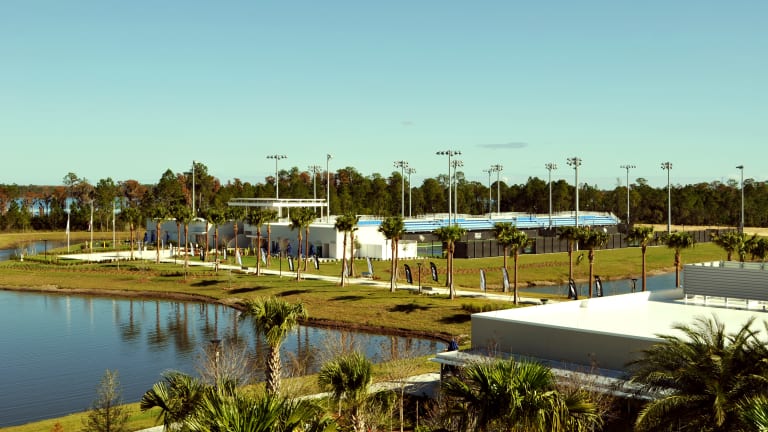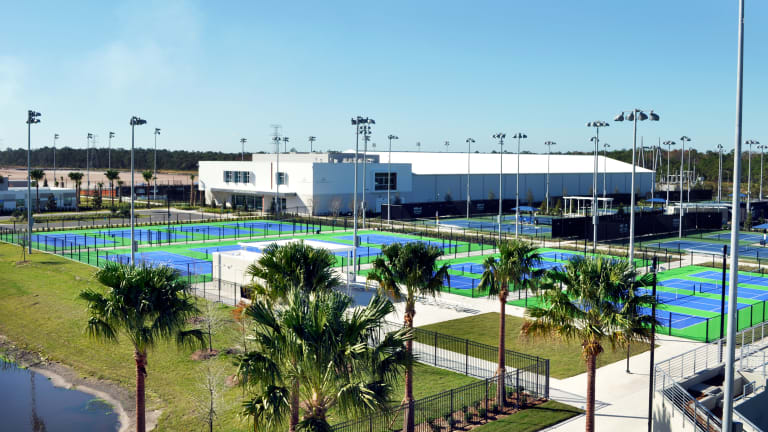Welcome to Florida Week! As the tours head southeast for the Miami Open, TENNIS.com and Baseline will feature all things Sunshine State. You’ll learn about the personalities, stories, teams and venues that have made Florida one of the tennis capitals of the world. We’ll also be reporting from the Miami Open in Key Biscayne.
As you’ll learn this week, when it comes to tennis, Florida isn’t just a state—it’s a state of mind.
Just off Highway 417 sit two cream-colored marble pillars trumpeting the entrance to Lake Nona, FL. Perhaps the town should add tennis racquets to the décor, given its new designation as the gateway to American tennis.
A couple of miles to the north, a freshly paved road leads to the USTA National Campus, a 64-acre, 100-court facility that sparkles like newly-whitened teeth and is the culmination of a four-year project to merge American tennis at all levels.
“This place really is the future of tennis, not just American tennis,” says Kurt Kamperman, the USTA’s chief executive for community tennis and the USTA National Campus. “We’d like this to be for the next generation of tennis players, as well as the last generation.”
It’s easy to understand why the USTA chose Lake Nona for its new home. Since the fall of 2007, its Player Development program shared space with the Evert Tennis Academy in Boca Raton. But with limited court availability, a dearth of surface options and nowhere to grow, it became clear that it was time to move on.
In Lake Nona, huge and open spaces abound, an international airport is close by, housing is relatively affordable and, importantly, the land was a good deal. Among other financial incentives, Orlando alone gave the USTA $25 million in tax abatements.


